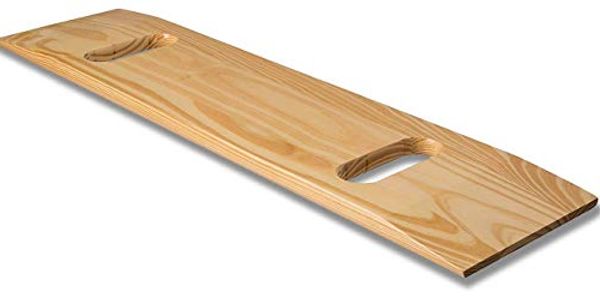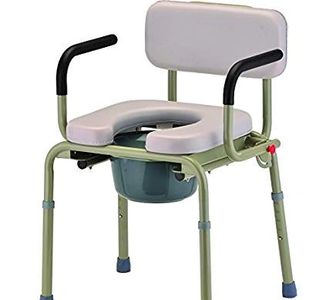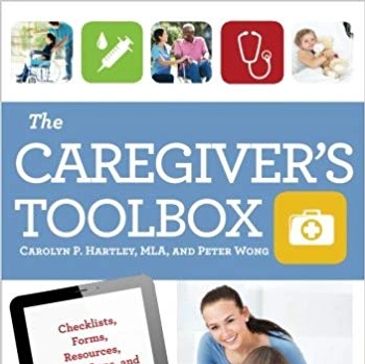EN
Translate:
SUBSCRIBE to Our New Daily Meditation - Start each Day With a Little Chunk of Wisdom
Newly Diagnosed with Transverse Myelitis?
For folks with TM, NMO, AFM & other walking challenges

Have you just been diagnosed with Transverse Myelitis? I know what it’s like. It’s not every day that you’re told you have a neurological disorder that you’ve never heard of before.
To try and help you, we have put together this section of www.beat-tm.com to share stories, facts, discoveries, and resources that can help you through these early days.
And just so you know, on Tuesday, June 28, 2016 about 2:00pm. I’d just received a call from my primary physician. Dr. Carol Straka. After seeing my lumbar-area MRI from earlier that morning, she new something was amiss. She wanted me at Advocate Lutheran General Hospital right away for more tests and observation.
Four days later, my legs were useless – I couldn't not walk a step without a walker. Adding to this injury, I had no control over my bladder or my bowels. I had to wear a diaper and a catheter. Most importantly, I had no ides what was happening to me.
Disease Basics
Transverse Myelitis is a neurological disorder - like Multiple Sclerosis - with swelling of the Myelin Sheath surrounding your spine. It screws up the communications between your brain, the nerves running down your spine, and your muscles from the waist down. This includes your bowels and bladder. You can't walk. It takes hours to poop. Your pee gets drained into a bag by a catheter.
Keep in mind about 1/3rd of us will walk again, another 1/3rd will walk with a walker, and the final 1/3rd will remain in a wheelchair. However, there is no accurate estimate to the time it takes for your recovery.
For more info on this chronic neurological disorder, visit our Resources section at www.beat-tm.com/resources Read in detail about:
· What is transverse myelitis?
· Symptoms of transverse myelitis
· Diagnosis of transverse myelitis
· Treatment of transverse myelitis
· Recurrent transverse myelitis
· Diseases associated with transverse myelitis
· Rehabilitation for transverse myelitis
Adaptive Living
Transfers

Transfers are one of the first things we have to do. Simply, it’s moving your body from one place to another, generally without the use of your legs. Keep a couple of things in mind: it’s easier moving from a higher surface to a lower one; transfer boards really aid going from lower to higher, like from a wheelchair into an SUV; work on building your upper body strength with weights or TheraBand’s.
Grippers

Grippers have become indispensable to me. From a seated position, my gripper extends my arm’s reach by 36” or more. You can get them from Lending Closets at many churches, or you can buy them. I’ve done both. My favorite is the Grip ‘n Grab. I can even pick up small pills off the floor with it.
Commodes

Because of TM’s impact on our bowels, it’s necessary to think about commodes. There’s really two types: one type fits over your regular bathroom toilet and usually has retractable arms; the second is freestanding with a bucket underneath. This works well when your home bathroom is to small for maneuvering a wheelchair or walker. I use the second and keep it in my bedroom.
Showers
Taking a shower can also be quite daunting without special aides, especially if you have a regular bathtub rather than a walk in shower. I have a 6-legged bath bench. Four legs and the seat sit inside the tub. The seat extends outside the tub held by the other two legs. With this device, I can sit first outside the tub, pull my legs over into the tube, then move the rest of my body over under the shower head.
Mobility
Wheelchairs & Pads

For more guidance on the complexity of buying a wheelchair, please see my article “The Six Biggest Mistakes I Made Buying My First Wheelchair” at
https://bit.ly/2PS8E3a This article touches on seat pads, but please note that pads can be absolutely critical to a regular user. The problem is pressure ulcers that can easily develop on the buttocks. Most folks I have talked to believe that ROHO-brand cushions are the standard to help avoid these very painful sores.
Walkers

Walkers are pretty standard. Some come with wheels; some with glides. Most can be adjusted for height. One style comes with a seat. That’s what I used before my legs got too weak. I enjoyed walking around our block but resting every now and then. However, because the seat faces you, you have to swivel around to sit. This can be challenging if you become over tired walking.
Canes and Walking Sticks
Canes and walking sticks seem to come in various forms and sizes, including height-adjustable ones. I loved it when I could use my collapsible walking stick, but I also have an adjustable metal cane. Like walkers and even wheelchairs, simple canes can often be obtained from church or community service-run Lending Closets.
Leg Braces

Now let’s touch on leg braces. First, before you really consider braces, have a serious chat with your Rehab Doctor or Physical Therapist. Second, consider your upper body strength. Depending on your situation, you’ll need to be strong to learn to use them. Third, if full leg braces are in order, the most critical component will be at the knees. It must lock your knees once you’re standing, then unlock to let you down again. This can be pretty tricky and trying for the metal devices.
Adaptive Clothing
Pants, shirts, dresses, & shoes
Just because you’re in a wheelchair doesn’t mean you want to go out every day with a tartan throw over your legs (even if it is cashmere, and from Dolce & Gabbana). You can develop your own style and look and feel amazing. Here’s an article with 10 simple tips on how to stay stylish as a wheelchair user without going overboard.
What is independence? For the one in five Americans living with a disability it starts with being free from the challenge of getting ready each day. Tommy Adaptive delivers clothing for men, women and children that features everything from one-handed zippers and discreetly hidden magnetic closures to extended openings and adjustable features. This collection was designed with and for people with disabilities to make getting dressed easier.

Photo Gallery
Physical & Occupational Therapy

Occupational therapy deals with all the tools and techniques of living with transverse myelitis. How to get dressed; how to go to the bathroom; how to do transfers; how to drive, etc. Physical therapy deals with your body and it’s ability to recover. Remember . . . 1/3rdof us will walk again, 1/3rd with get around with a walker, and 1/3rdof us will likely end up in a wheelchair.
In-Patient Therapy
Given the state of today’s medicine relative to TM, physical therapy is the NUMBER ONE means for your recovery. While TM provides us with no guarantees, the more you do, the better. Most techniques are easy to learn and do at home, but I recommend as much as you can get when your in-patient then continue after with out-patient.
Out-Patient Therapy
As to out-patient, remember that we have a neurological disorder. Most fitness centers and gyms are clueless as to the muscle and balance challenges of our type of disease. However, local hospitals may have separate facilities and staffs for neurological patients. A small number of independent centers are springing up, and a national franchise operation called Fyzical Balance and Therapy Centers now has over 500 locations around the US. The times, they are a changing.
Support & Pain
Caregivers – Family versus Professional

This may be one of the most difficult issues any of us TMers will ever have to face. While many of us may not need anything close to full-time care-giving, most of us could not afford it anyway. As a result, we tend to fall back on the family caregiver.
Be prepared. This can be extraordinary stressful on both you and your family caregiver. If at all possible, find a balance between your spouse or parent and a professional caregiver. Even four hours a day a couple times a week can bring peace to a potential volatile home environment.
There are many staffing services across the country that are providing home health and care
giving. This includes a national organization called Visiting Angels. They have been recommended to me by several people.
Group Support – Get Involved
Since 1935 when a 6-month sober New York stockbroker met a drunk doc in Akron, Ohio and together launched AA and its 12-Step Recovery Program, the world grew aware of the power of group support, particularly for those that shared the same disease. It still holds true today for those of us with Transverse Myelitis and related neurological disorders.
To gain that support, you just have to reach out and take the first step. The TMA (Transverse Myelitis Association) has organized many volunteer driven support group meetings around the country. You can find these and much more at www.myelitis.org .
For virtual support, go to Facebook. There are many local and global groups organized to support TMers, their Caregivers, and patients of many other neurological disorders. I recommend the granddaddy of these groups – Transverse Myelitis Folks, Blue Crew at . . . . . . . . Visit our Resource page for a list of many others.
Pain Relief – Opioids, non-Opioids
This is a very ticklish subject. Many of us end up using prescription opioids for some time for the pains associated with Transverse Myelitis. There are also other non-opioid pharmaceuticals to use. There effectiveness seems to vary by individual. Now there’s CBD Oil that seems to help some with pain, anxiety and stress.
From my perspective, this is a private issue that needs to be evolved over time with the aid of your primary doctors and neurological specialists.
Copyright © 2018 Growth Resources Inc. - All Rights Reserved.











